site search
online catalog
ID’D SILVER MOUNTED REVOLUTIONARY WAR OFFICER’S CUTTOE AND SCABBARD: THOMAS GRANT, D.Q.M., NORTHUMBERLAND DISTRICT, PA, SUPPLYING FRONTIER FORTS

Hover to zoom



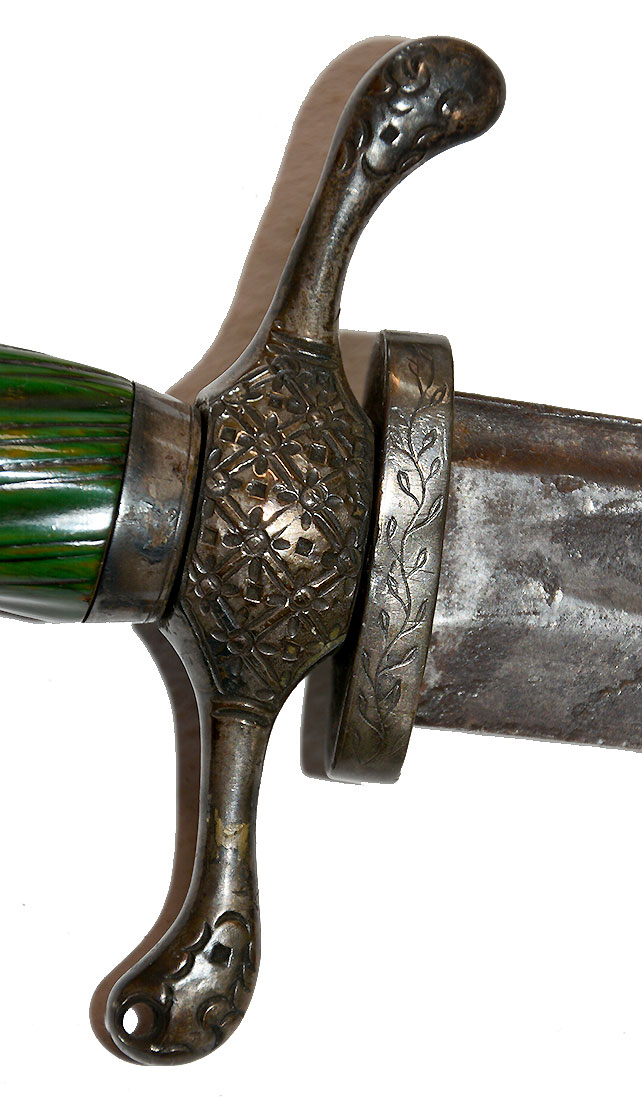

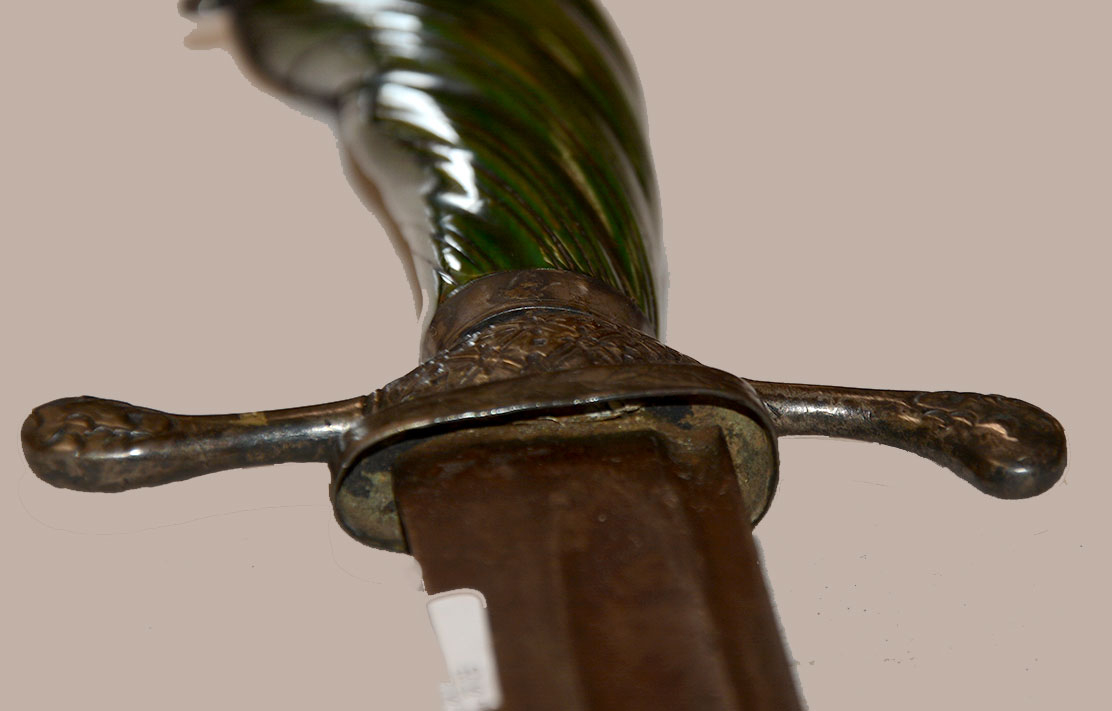


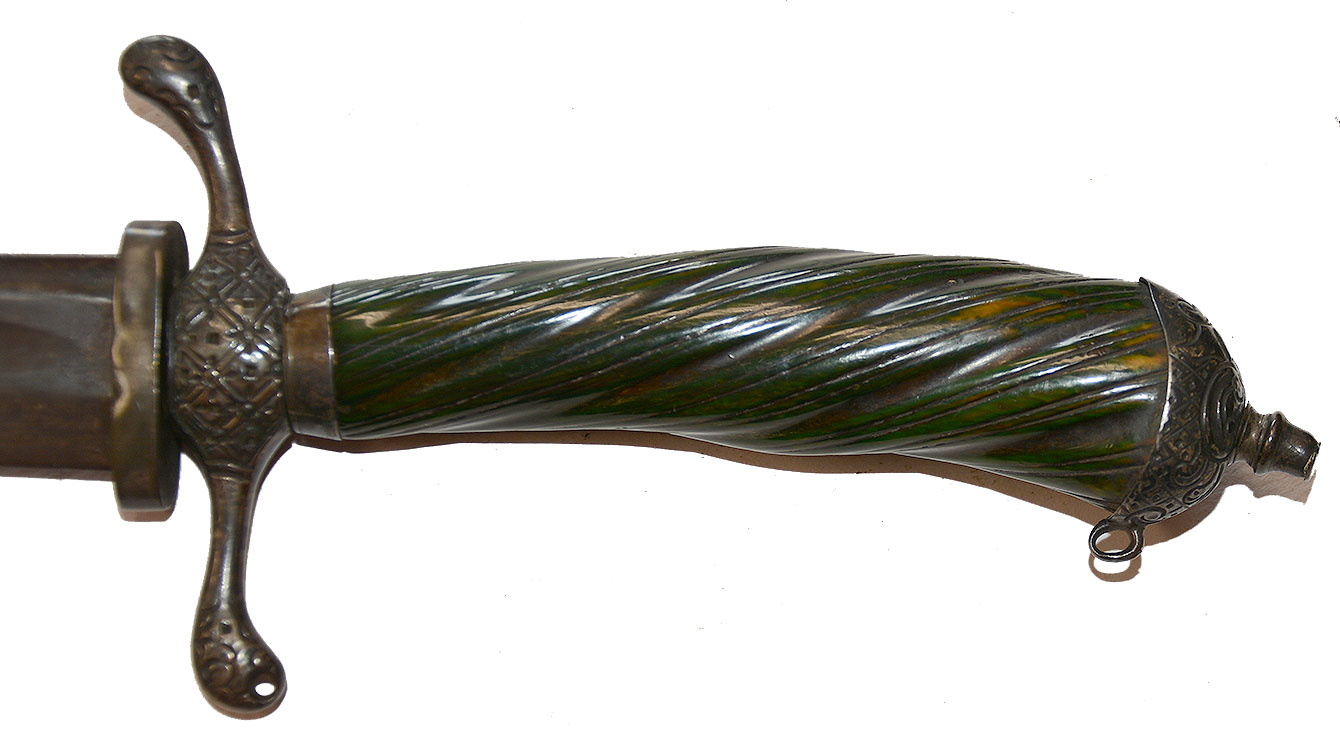
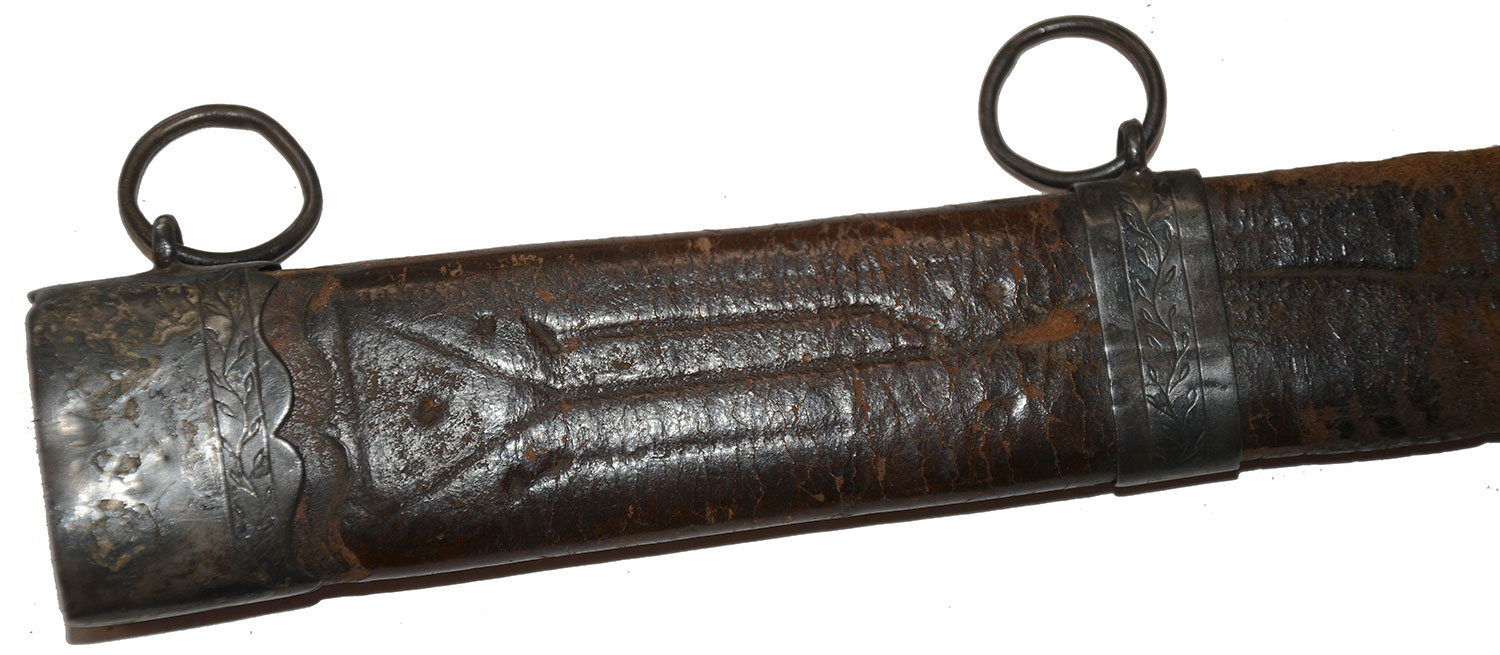
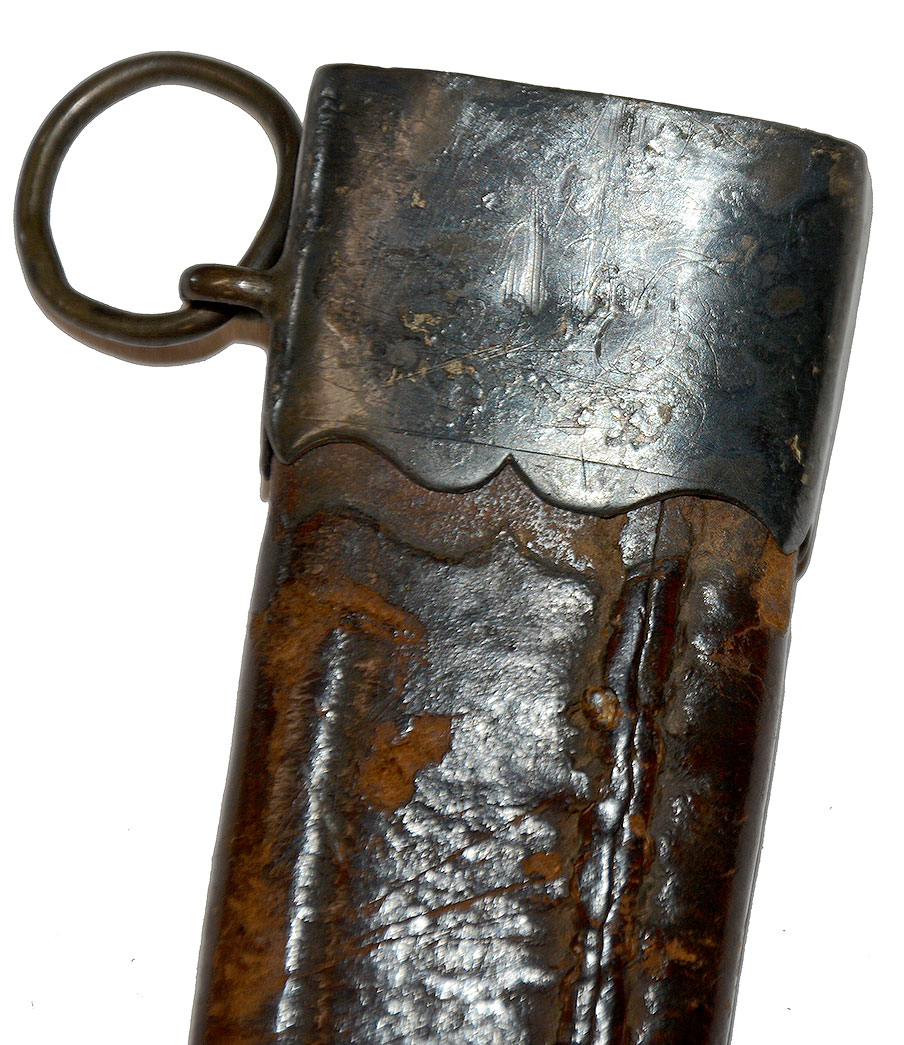
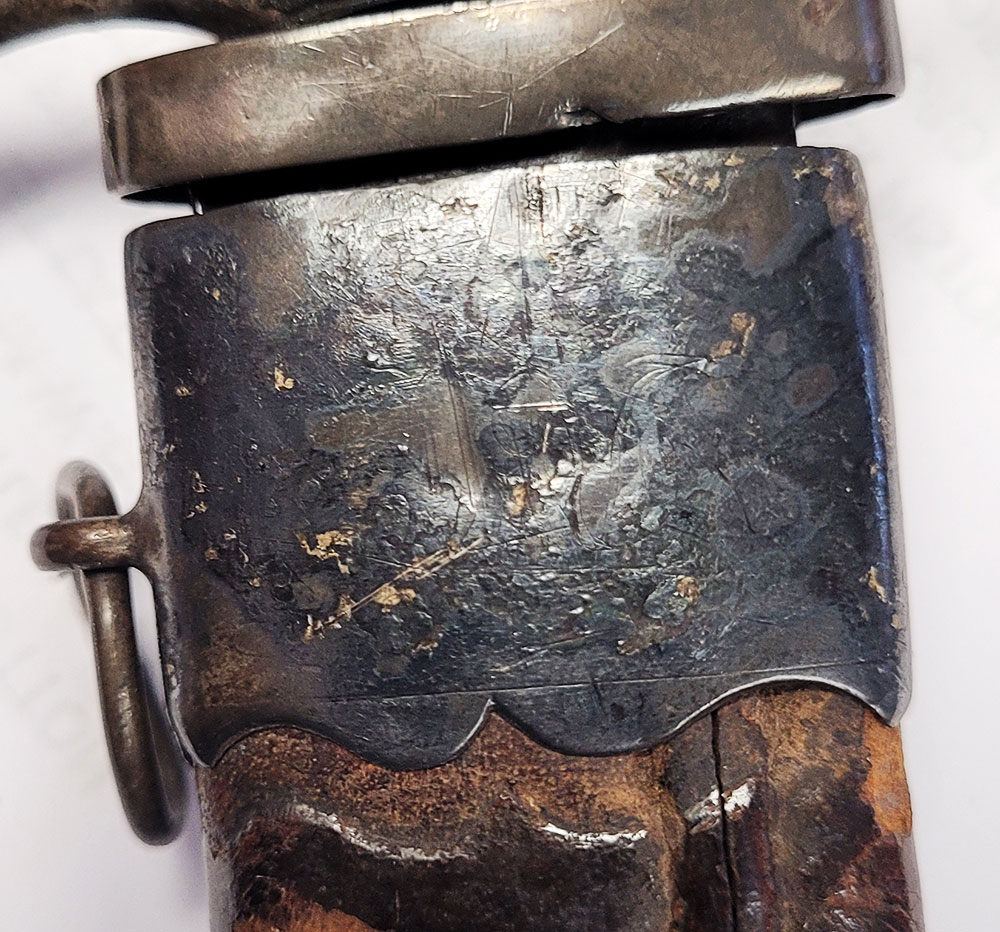
$1,895.00 SOLD
Quantity Available: None
Item Code: 1256-217
In civilian life these short hunting swords, originally intended to finish off wounded game, marked a gentleman and on the battlefield were convenient to carry, useful for personal defense, and served to mark the bearer as an officer. Swords of this type can be seen in several sources, including Neumann’s “Battle Weapons of the American Revolution,” where they encompass plates 84.SS to 103.SS, or in his earlier “Swords and Blades,” plates 84.S to 124.S, and are broadly dated 1750-1785. “Cuttoe” is derived from “couteau de chasse.” Washington’s best known sword is his hunting sword made by Bailey of Fishkill, N.Y.
This is a very good example of the type, with full length blade showing shallow nicks to the edge along the upper half of the full-length blade, but with complete silver mounted hilt missing just the small, chain knuckle bow, and very nice, twist carved, green stained grips of bone or ivory, along with most its original, brown leather, silver mounted scabbard. The pommel has the typical tall capstan rivet for the blade tang and has a rounded pommel cap of silver engraved with geometric and swirling patterns that are carried over to the quillon block and tips of the guard. The grip has some rubbing to the color, but no significant cracks or chips and is fitted with a plain ferrule at the base. On the underside of the quillon block is a scabbard cap that is plain on the reverse, but engraved with a wavy, leafy vine on the obverse. The blade, with wide central fuller and narrow secondary fuller running under the back edge is a muted silver gray with dark gray spots. The upper two thirds of the silver mounted leather scabbard, and a section from the lower portion, are still with the sword. The leather shows as dark brown with lighter brown areas from finish loss. The scabbard still shows impressed border lines, however, as well as geometric impressed designs between the two silver upper mounts, with carrying rings in place, engraved on the obverse with a band of the same wavy leafy, vine as on the throat cap. Both mounts are plain on the reverse, but the upper mount shows some traces of engraving that was likely the owner’s initials, often placed in this location and rendered in entwined or foliate letters.
The sword comes with a modern tag dating it 1765-1780, which is close enough, and stating it is “believed used by Col. Thomas Grant Sunbury, Pa.” likely indicating it came out of descendant’s estate, though we have no more exact provenance, and we have not been able to decipher the remnants of the engraving on the scabbard mount, which could back it up. Thomas S. Grant was born in 1757, died in 1815 in Sunbury, where he is buried. His rank of Colonel likely derives from a later militia appointment, but he had Revolutionary War service as an Assistant or Deputy Quartermaster for Pennsylvania in the Northumberland District, which extended far beyond the bounds current Northumberland County, once including lands that make up more than twenty counties now. His widow’s pension file states that he was a resident of Northumberland and enlisted in August 1778, which would be in the wake of the Battle of Wyoming, then a township of Northumberland, and appears as a “Commissary of Issues” to Sweeny’s Company of Thomas Hartley’s regiment, which likely refers to that period, when Hartley’s regiment was sent to the district following the battle. Whether he remained with them or they were simply part of his duties is unclear- the regiment had a good combat record and was on the Sullivan Campaign in 1779- but he was Assistant or Deputy Commissary for the district in September 1780, a position he seems to have held until 1782. His duties seem to have included supplying troops and small forts (Forts Freeling, Rice, and Jenkins are mentioned in one affidavit) defending the district against further raids by loyalist rangers and their Indian allies. Some of Grant’s military account books are available online and his widow’s pension file includes an October 1780 letter to Grant from Zebulon Butler as Colonel Commanding at the Wyoming Garrison, Whether Grant had service in the militia prior to August 1778 is unclear, but seems likely, given his presence on what was the frontier, and might yield to further research, as is perhaps some service during the period of the Sullivan Campaign in 1779, etc.
This is an interesting officer’s sword, worthy, as they say, of further research. [sr][ph:L]
~~~~~~~~~~~~~~~~~~~~~~~~~~~~~~~~~~~
THIS ITEM, AS WITH ALL OTHER ITEMS AVAILABLE ON OUR WEB SITE,
MAY BE PURCHASED THROUGH OUR LAYAWAY PROGRAM.
CLICK HERE FOR OUR POLICIES AND TERMS.
THANK YOU!
Inquire About ID’D SILVER MOUNTED REVOLUTIONARY WAR OFFICER’S CUTTOE AND SCABBARD: THOMAS GRANT, D.Q.M., NORTHUMBERLAND DISTRICT, PA, SUPPLYING FRONTIER FORTS
Most Popular
Historical Firearms Stolen From The National Civil War Museum In Harrisburg, Pa »
Theft From Gravesite Of Gen. John Reynolds »
Selection Of Unframed Prints By Don Troiani »
Fine Condition Brass Infantry Bugle Insignia »
featured item
SINGLE SHOT PERCUSSION PISTOL BY HOLLIS OF LONDON PRESENTED TO BEVERLY KENNON, CSN
Offered here is a single shot .54 caliber percussion pistol is a product of gunmaker Richard Hollis of London, England, and identified to a navy officer who served in the U.S. and C.S. navies. The pistol measures approximately 10” long. The… (1268-689). Learn More »
site search
Upcoming Events
The shop is currently closed so that we may conduct our annual inventory. We are available by phone… Learn More »


